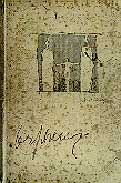
|
|
|
| History of Portuguese Literature | Origins of Portuguese Literature | The Portuguese Language | Oral Literature | Fiction | Lyricism |
| Travel Literature | Cantigas de amigo | Historiography | Doctrinal Prose | ||
| Baroque and Mannerism | Classics | Existentialism | Experimentalism | Enlightenment | Modernity |
| Neo-Realism | Post-Modernism | Realism | Romanticism | Saudosismo | Symbolism |
Modernism
|
|
A
cosmopolitan aesthetic atmosphere which defined European and international arts
and culture at the turn of the last century and particularly marked the first
two or three decades of the twentieth century.
In Portugal, the tendency has generally been linked with the figures of Fernando
Pessoa, Mário de Sá-Carneiro, Almada
Negreiros and many others, and is centred around the magazine Orpheu
(first issue printed in 1915).
The aesthetics of modernism was quintessentially one of diversity (being clearly
visible in other adjacent aesthetics and avant-garde movements - sensationism,
Paulism, intersectionism, etc.), representing a questioning of established
ethical and literary values, a feeling of euphoria in the face of innovations in
literary technique, and the freeing of literary writing from all conventions and
rules. The movement was later to mark the twentieth century in a remarkably
acute fashion, to such an extent that it has constantly been linked to the
theories and controversies surrounding two other relatively indeterminate
historical, literary and aesthetic notions (modernity
and post-modernism), which can only usefully be
explained by their actual origins.
In Portuguese literature, the magazine Presença
(edited by José Régio and João
Gaspar Simões) was understood by some as representing the “modernist
counter-revolution” (Eduardo Lourenço), and was seen by
others as a kind of “second modernism”.
 "Orpheu", No. 1, January-February-March, 1915 |
© Instituto Camões, 2001